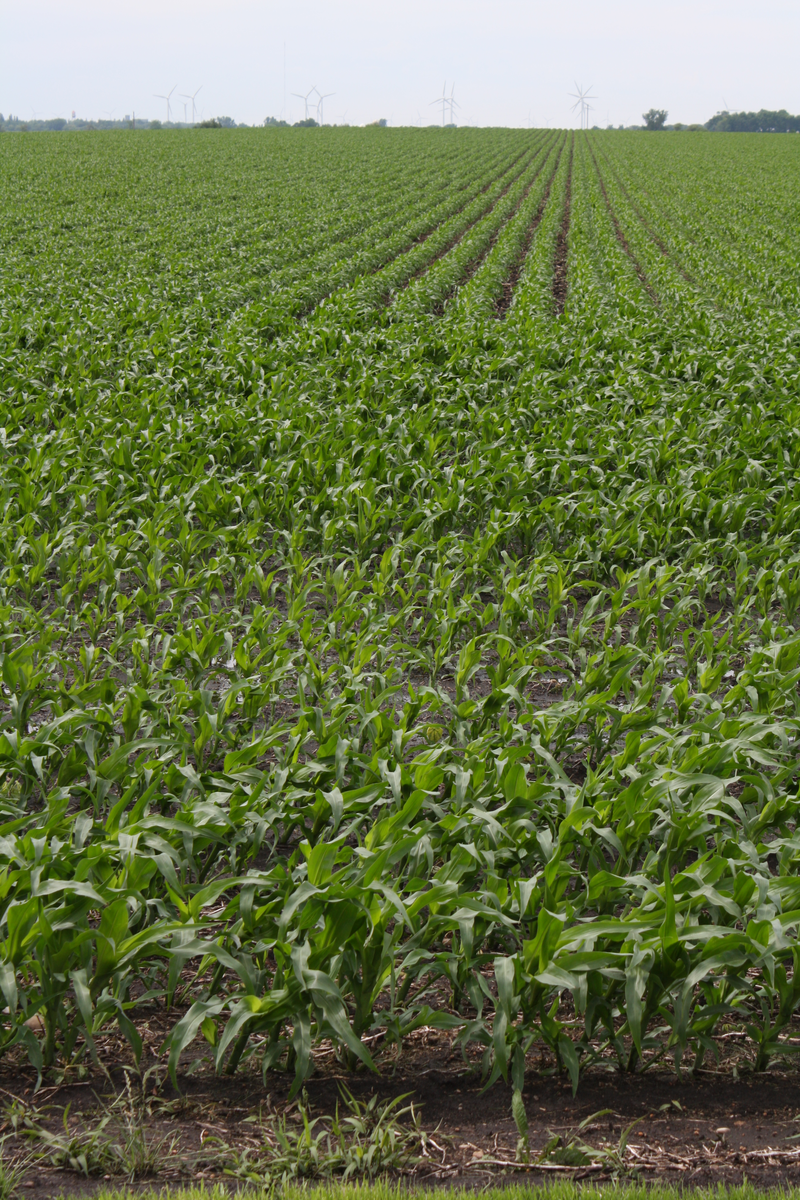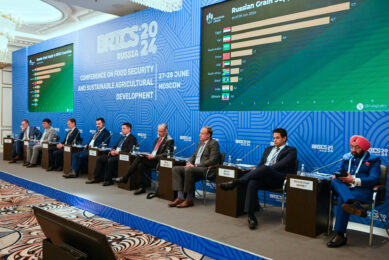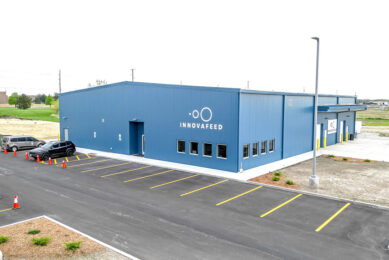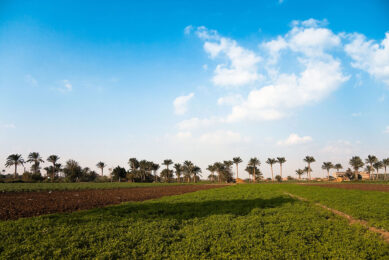US feed industry could recover with one good harvest

The current high feed prices are here to stay as a result of a number of intricate political, economic and demand-supply conditions. Understanding the background helps to cope with the challenging conditions, Dr Terry Barr stated at IPPE in Atlanta.
By Vincent ter Beek
Yes times have been tough for the US feed and livestock business, but things could turn around relatively quickly. This was the key message of Dr Terry Barr, senior director of industry research at CoBank, when speaking in Atlanta, GA, USA in January. His presentation at the International Production & Processing Expo (IPPE) must have been exactly what everybody in the international poultry industry was hoping to hear. His Milton L. Dendy keynote address was called ‘Drought, debt and politics drive economic and poultry outlook’ and as its name suggests, he sought to explain the current situation of high feed prices, as well as offer perspectives for the near future.
He illustrated the rise of commodity prices by introducing the term ‘new normal’ i.e. the price everybody is used to pay for commodities. He pointed to a phase of extreme transition in the early seventies, when commodity prices grew rapidly. This level, more or less stayed constant until 2005, when another phase of heavy price rises commenced, see also Figure 1. Are we heading for another ‘new normal’, he wondered.
In an attempt to identify the drivers behind the economic and political turmoil of the last five years, he touched on the financial crisis, rising energy prices, the rapid growth in emerging markets and low grain stocks. They can be continuing stories over the next five years (Table 1).
India & China
The rise of India and China as economic drivers will continue, which will account for 70% of the increase in the middle class between 2000 and 2030. Their ‘ability to pay’ will set global market prices. He warned, however, ‘significant volatility will prevail around the growth path’.
China has been spurring global economic growth driven by trading. The European Union topped the list in 2012, followed by the United States, Hong Kong, ASEAN and Japan. With crises in the advanced economies, however, even China ‘suffered’ as growth figures have no longer contained double digits as they were in 2005-2007. The year 2012 showed a ‘mere’ 8% growth, relatively low when considering the recent history of China, and for 2013 Barr projected a growth between 7.5 and 9.5%.
The question remains whether Europe is going to profit so much from the challenges in the emerging markets. The euro region is struggling on its path to a banking union. Having built a monetary union, many Southern European countries like Greece, Italy and Spain have turned financially weak and there does not seem to be an easy way out. Barr showed a projected 0.2% decrease of the European economy’s size, followed by a projected 1.7% growth in 2014.
The United States, although in heavy weather too, may be in a better position to profit from China’s continued growth, Barr said. Some major policy reforms are going on in the US economy, like in the financial and energy sectors. In addition, regulations for immigration, health care, regulatory oversight and deficit reduction will go through uncertainty. This uncertainty, Barr pointed out, may be too large for a rapid recovery of the US economy. The US national debt has grown very rapidly to about USD 18 trillion – and this is likely to rise by another USD 9 trillion in the years to come.
Translating this to US agriculture, the reforms on the US market are likely to have an impact here too. The US Farm Bill, the primary agricultural and food policy tool of the federal government, passed on average every five years by the United States Congress – is to be discussed soon as the latest one dates from 2008. Reduction of the US Farm Bill will be required.
Future prices
What will determine future agricultural commodity prices? Demand of crops by the fuel and energy sector, South American crops, the global economy and the 2013 crop in the US itself are all playing around.
That last issue may be a cause of worry, Barr said. Global grain stocks continue to be low – and with the continued demand from China this is a major concern. The US produced 10% less in 2012/13 although acreage harvested grew by 4% (Figure 2). The hole in the market left behind by dwindled US production due to unfavourable weather condition over the last years has quickly been filled by Brazil and the countries in the former Soviet Union. Total global acreage planted in 2013 is projected to rise by 4-5% again, with major rises to be noted in corn and wheat production.
Again, it remains to be seen what role the US will play in this story. Weather projections for the crops of 2013/2014 do not reveal an overly enthusiastic picture, as the focus remains on drought conditions, Barr said. The weather uncertainty led to price volatility – he pointed to average prices for bushels of corn, soybeans and wheat over the last couple of years, see Table 2.
The good news, however, is that the large acreage suggests that significant stock can be rebuilt significantly in 2013 if Mother Nature cooperates. With an acreage of 99 million acres planted, a potential production of 15,015 million bushels of corn (381.4 MMT) would be possible. This would mean that US stocks can rebound.
As for soybeans, Brazil and Argentina together have already taken over the US’ leading position as soybean producer since 2002. Global soybean stocks therefore rely on the South American crops. Most of these, however, go to China. Indirectly, a good South American stock would lead to higher US stocks as this will diminish the pressure on the market and thus a positive effect on prices.
Livestock prices
Very high feed prices have had a direct impact on animal production, as they could not be fully transferred to the livestock product prices. The US cattle inventory has shown a downward trend since about 1997 and is now the lowest since 1952. Beef production has not been growing substantially for years, and broiler and pork production seem to be breaking even. Total production increase in 2013 is expected to be less than 1%. The US broiler industry used to rely on export markets but is facing increasing competition, as Brazil has been exporting more poultry than the US since 2005.
In order to survive, the US poultry market diversified its output as the top-10 of markets in 2012 was substantially different from the one in 2000. Countries topping the list like Mexico, Russia and China/Hong Kong remained but the top-10 accounted for 60% of the total, whereas they did so for 82% in 2000. Among the newcomers, the US can count Angola, Cuba, Taiwan, Lithuania, the Philippines and Iraq.
Break
In short, the background of rising feed prices has been multifactorial. What the feed industry needs now is some time to catch up, a break from volatile markets. He stated, “The continued low of global grain stocks could be solved but it is going to take a lot of good harvests”. Future years will tell whether this will be true.
2013 IPPE sets record attendance
The 2013 International Production & Processing Expo was the first of its kind, combining the latest in all phases of the poultry, feed and meat industry from live production and processing to further processing and packaging. The show had record attendance with 26,393 visitors from all over the world, being able to touch base with 1,189 exhibitors. There were 5,448 international visitors from 111 countries represented at the expo. The largest group from a single country outside the United States was Canada with 916 visitors. The largest region represented was Latin America/Caribbean with 2,394 visitors. “Feedback from attendees has been very positive in terms of the education programs and time spent on the trade show floor. Many are looking forward to 2014,” said AFIA chairman, Alan Gunderson. Next year’s IPPE will be held January 28-30, 2014, at the Georgia World Congress Center in Atlanta, GA.











